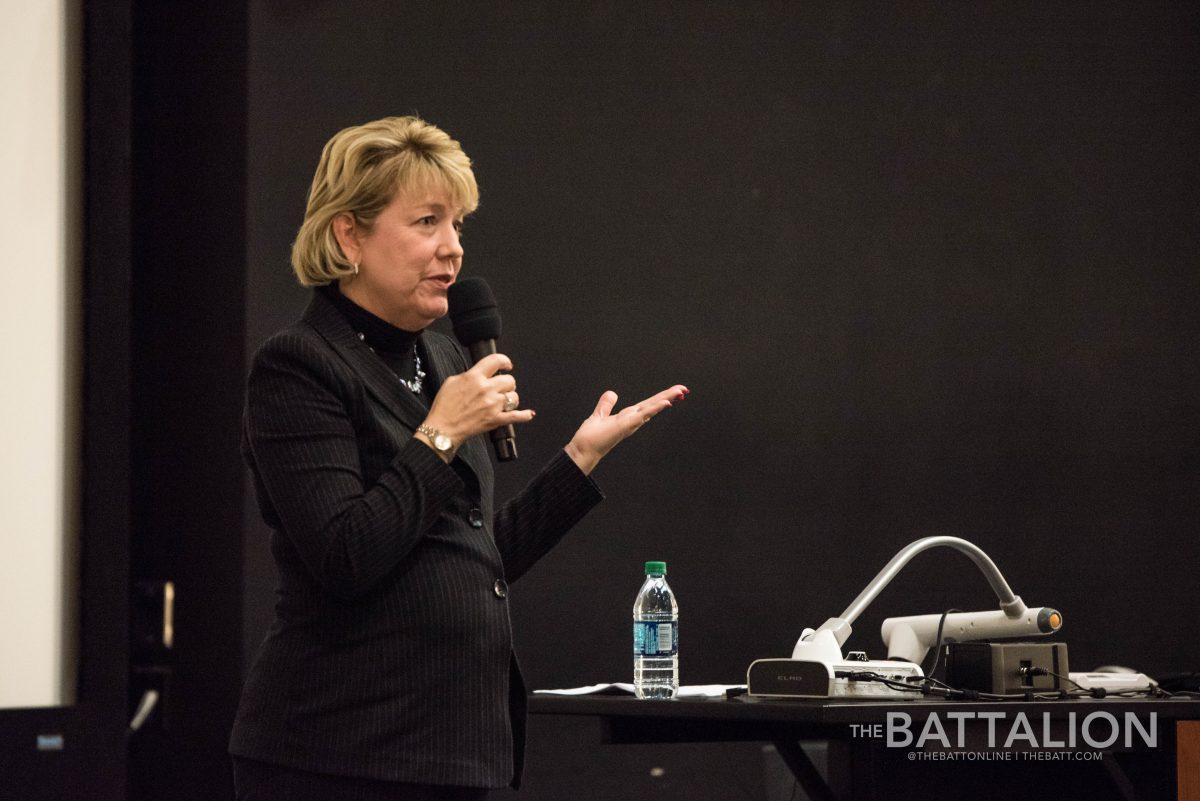In honor of Holocaust Remembrance Day, the Texas A&M Department of International Studies partnered with the Israeli Consulate for a documentary screening Tuesday night.
International Holocaust Remembrance Day is recognized annually on Jan. 27 to commemorate the anniversary of the liberation of Auschwitz-Birkenau, to honor the victims of Nazism, and to promote educational programs to prevent genocides. Tuesday’s event included a film-screening of “Big Sonia” and a Q&A session with the Holocaust Museum Houston CEO Kelly Zúñiga. Since Jan. 21, there has also been a photo exhibition in the Academic building showcasing heroic individuals entitled “Beyond Duty: Diplomats Recognized as Righteous Among the Nations.”
Produced by the main character’s granddaughter, “Big Sonia” is a documentary that tells the story of Holocaust survivor Sonia Warshawski, who lives in Kansas City, Kansas and works at a tailor shop she has owned for over 30 years. When she is not at work, Sonia exercises her ability to connect with people by recounting her life during the Holocaust to students and incarcerated people.
Consul Omer Chechek-Katz works in the Consulate General of Israel in Houston and introduced the documentary. Checkek-Katz said he hopes the film resonates with students and serves as a reminder to never let such a disaster reoccur.
“[Sonia] is very small in size but a huge person and leader,” Chechek-Katz said. “Telling her story helped a lot of other people to overcome their own private problems, and this will show how one experience can contribute to other people’s future. I hope students will take away the message of hope and keep the memory of the Holocaust.”
English senior Madison Imiola said Sonia exhibited an incredible and surprising ability to endure.
“My favorite thing was when Sonia said ‘When you feel down, look more down and you’ll be on top,’” Imiola said. “Her kind of charm and spirit is difficult to have, but she exhibits it flawlessly. We often live our own lives doing regular life and we can’t even stay that positive, yet someone who has endured unspeakable horrors was able to portray positivity.”
Zúñiga conducted the question and answer session after the film and said any opportunity to meet a survivor of the Holocaust is remarkable as the number of survivors is dwindling. According to Zúñiga, young people should be aware of their responsibility to advocate for human dignity.
“When fighting prejudice, hatred and apathy, everyone can take action and everyone can be an upstander,” Zúñiga said. “We try at the museum to emphasize the importance of how to stand up for others that are less fortunate, weaker and may be abused. What we try to do is teach to communicate in a civil way and to have an impact within the community showing the importance of civility and respect.”
During the Q&A, Zúñiga said the current generation will be the last to physically meet a survivor. To preserve these important testimonies, the USC Shoah Foundation has launched “Dimensions in Testimony,” an initiative to create interactive video biographies of Holocaust survivors.
“This technology basically memorizes the speech pattern of the survivor,” Zúñiga said. “Survivors have been asked 1,200 questions over a week, and 12 survivors have been questioned so far. So when the voice recognition technology goes in, you get to ask the survivor a question and then the survivor responds to you. You will feel like they’re alive.”
Computer science sophomore Nathan Mandell said he attended the event to see the story of a living survivor through the medium of film.
“I came because I’m Jewish, and it’s always important to hear survivor stories when you get the chance,” Mandell said. “They won’t be alive much longer. People should Interact more with people who have had different experiences than you and go out of your comfort zone whenever you can and meet someone new. Stories like this you won’t hear just by talking to the same people.”










